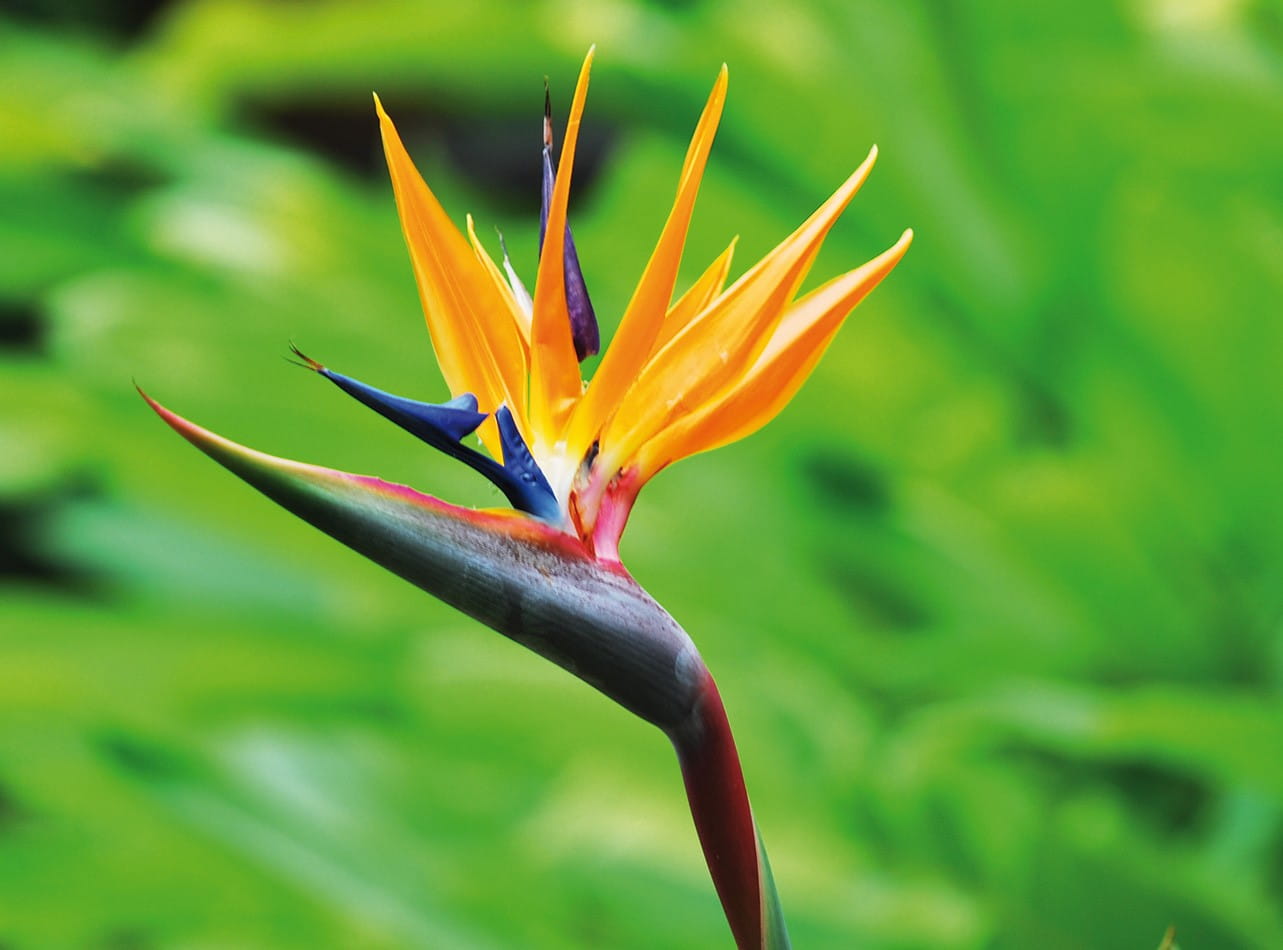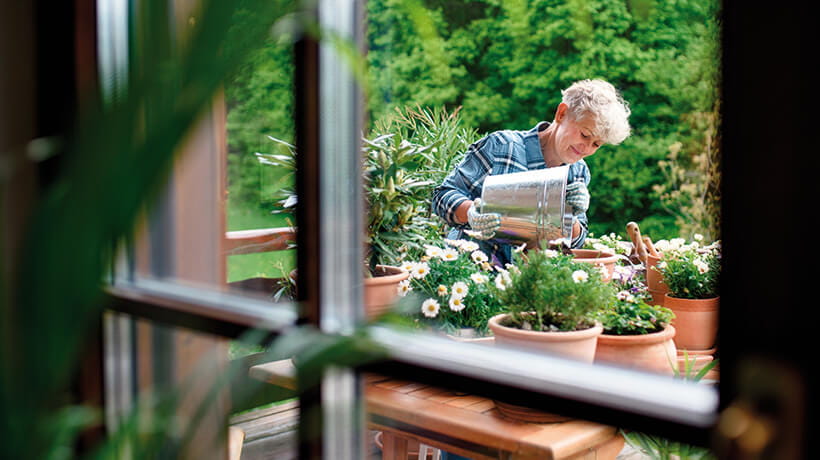
If you grow lavender in your garden or have a friend or family member who is happy for you to make the most of their shrubs, follow our top tips on how to dry lavender.
By preserving the flower buds you can enjoy the scent throughout the year and help keep bugs out of your home.
“All lavender is good for drying, but the earlier-flowering darker purples, such as Imperial Gem, are great for colour,” says lavender grower Simon Charlesworth, “while the later-flowering paler purples, such as Sussex, are best for scent.”
You can get the best of both worlds with some lavenders, and he recommends Olympia and Anniversary Bouquet if you’re looking for “good colour and scent”.

Lavender in the UK typically flowers between June to August.
Some varieties, like English lavender, may start blooming in late June and continue into July. French lavender varieties can flower from May to September if deadheaded.
The best time to cut lavender depends on what you plan to use it for. Charlesworth suggests cutting it as the first flowers open if you want to dry a bunch to display or to flavour food, as “the dry lavender will then remain looking fresh and coloured”.
“If the dried lavender is to go into bags or sachets as loose grains, then it can be cut when in full flower. There’s more scent in the head at that time,” he adds.
The time of day you cut your lavender can also make a difference. Cutting the lavender around midday rather than first thing gives the shrub time to dry after the morning dew.
Dampness from dew is best avoided as it can lead to mould developing during the drying process.
There are several ways to dry lavender. It is best dried naturally over several weeks.
However, if patience isn’t your virtue, lavender can be dried in the oven in a matter of minutes.
“Cut the lavender just above foliage level using secateurs or scissors,” says Charlesworth. Don’t forget to leave the cutting until around lunchtime, as mentioned above.
“If cutting for bunching, put an elastic band around 100-200 stems. As the bunch dries, the stems shrink, so an elastic band ensures it remains intact,” explains Charlesworth.
“The flowers' colour will also turn from purple to blue.”
“Once cut and banded, hang it upside down in a dry shaded or dark area,” says Charlesworth. But why should the lavender be hung upside down and not simply placed in a vase?
“Hanging it upside down stops the flowerheads from dropping before they dry,” he explains.
For lavender to dry well, it must be stored in an area with low humidity, which is dark and shaded as it is “essential to stop the flower heads fading”.
You can leave your lavender hanging until it is completely dry. This will take about two to four weeks, depending on the drying environment.

If you’re drying lavender for the flower heads rather than the full stems for a bouquet, Charlesworth advises to strip the grains from the flower heads, as it’s a quicker drying method.
“Thinly lay the fresh stems on some form of net – a greenhouse shade netting or net curtains – in a dry environment such as a conservatory.”
Within a week the heads should be dry, and grains should be easily released when lightly rubbed between the hands. If the grains are for bags and sachets, they’re ready for use.
However, if you’re using them to flavour food, Charlesworth suggests that “some light sieving should remove the chaff”.
Lavender doesn’t need to be dried naturally – instead it can be popped in an oven to speed up the process.
Here we take you through the steps on how to dry lavender in an oven.
Your oven needs to be set to a low heat of 100°C (210°F), or 80°C (175°F) if you have a fan oven.
Spread a thin layer of lavender onto a baking sheet (it’s best to line it with baking paper to avoid the oil penetrating your tin) and leave it to dry out for 10 minutes.
Keep the oven door slightly open to allow the moisture to be released.
Remove the lavender and check if it is still moist. If it still needs drying, turn it over and return to the oven for five more minutes.
When the lavender is dry, remove it from the oven and gently run your fingers through the stalks.
The blossoms will disperse and can be stored in a container.
Drying your lavender upside down will take much longer than popping it in the oven for 10 minutes.
After a quick turnaround? Then using an oven is your best bet, but if you have time and patience and two to four weeks to spare, we’d recommend taking the slow route and drying your lavender upside down.
The lavender oil is stored in the part of the plant called the calyx – it’s where the flower emerges from.
Charlesworth explains that the calyces are ribbed vertically and can sometimes be seen with the naked eye, and in between the ribs are thousands of oil glands.
“When these calyces or grains, as they’re commonly referred to, are squeezed, the glands are ruptured, releasing the oil. Hence squeezing a lavender bag or bunch once in a while will release the delicate lavender aroma,” he says.

In its simplest form, dried lavender can be used in a bouquet to adorn and fragrance a room. Charlesworth suggests “popping some grains from a dried lavender flower head into potpourri”.
It can also be used to get ride of moths. “Hang a sachet in a wardrobe or a drawer to deter clothes moths,” says Charlesworth, “or sprinkle some grains under sofas and armchairs where carpet moths may lurk.”
For maximum scent, squeeze the lavender grains to release it. It’s also known for its abilities to ease stress and aid relaxation.
Having trouble sleeping? A lavender bag popped under your pillow at night can help ease you into the land of nod.
And although it may not be everyone’s cup of tea, lavender can also be used to flavour food. “It can add a floral note to biscuits, shortbread and scones,” says Charlesworth. “Scent the sugar to be used in the recipe by adding grains to a bag a few weeks before use.”
However, he warns: “Use in moderation. A teaspoon is sufficient for a batch!” It’s an acquired taste that Charlesworth says he’s yet to develop, but he suggests using dark-purple lavender as it “adds colour and has softer floral and less astringent flavour”.
With her 30 years of experience, Camilla Sharman has covered a wide range of sectors within the business and consumer industries both as a feature, content, and freelance writer. As a business journalist, Camilla has researched articles for many different sectors from the jewellery industry to finance and tech, charities, and the arts.
View author page
Find out about Saga's Gardening holidays here...
Explore stunning outdoor sanctuaries on Saga’s garden-themed getaways – it doesn't matter if you’re a keen horticulturist or just someone who enjoys colourful blooms.

Saga Home Insurance comes with garden cover included. Find out what’s included and get tips to help secure your garden.










